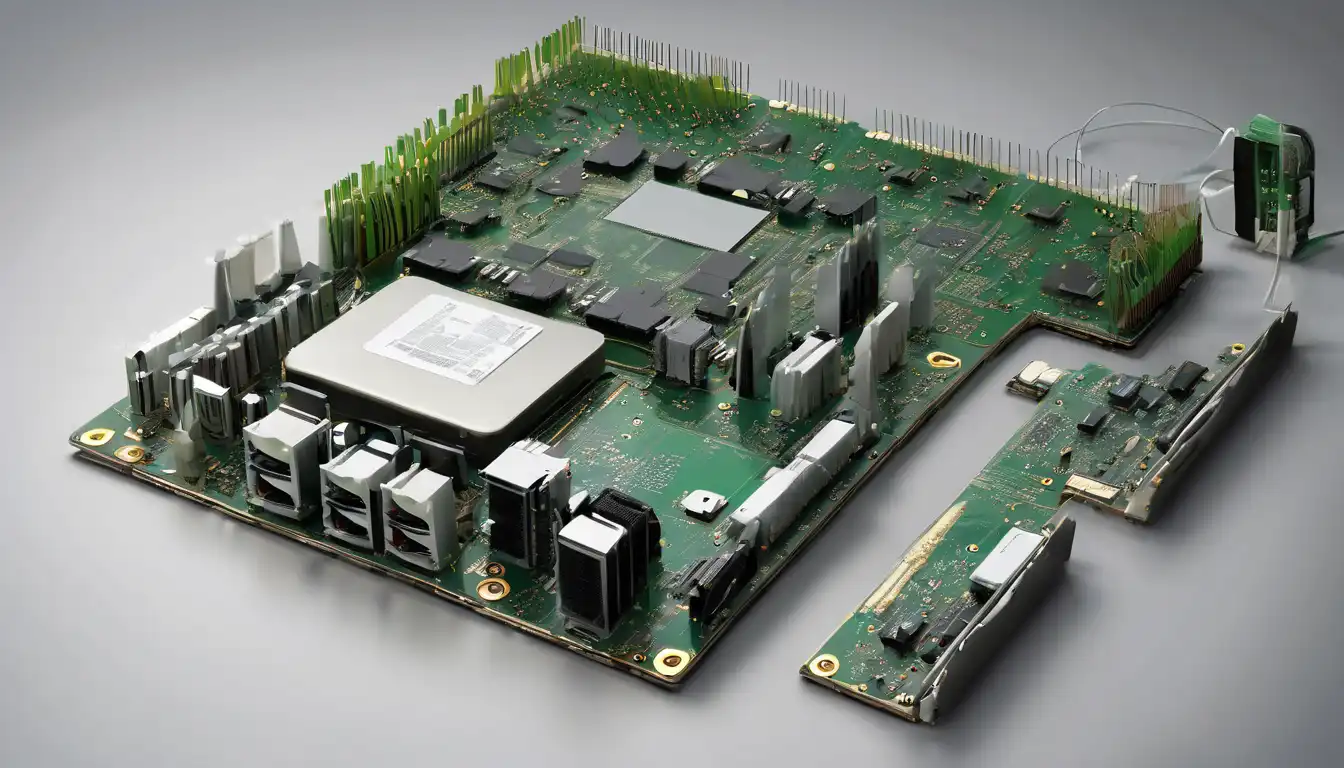Introduction to Sustainable Computing
In an era where digital transformation is accelerating at an unprecedented pace, the environmental impact of computing has become a critical concern. Sustainable computing represents a paradigm shift toward eco-friendly hardware solutions that minimize energy consumption, reduce electronic waste, and promote environmental responsibility throughout the technology lifecycle. As businesses and individuals increasingly prioritize sustainability, the demand for green computing hardware continues to grow exponentially.
The Environmental Challenge of Traditional Computing
The technology sector accounts for approximately 2-3% of global greenhouse gas emissions, a figure that continues to rise as digital adoption expands. Traditional computing hardware contributes significantly to this environmental burden through several key factors:
- High energy consumption during operation
- Resource-intensive manufacturing processes
- Short product lifecycles leading to electronic waste
- Toxic materials in components and batteries
- Inefficient cooling requirements
Addressing these challenges requires a comprehensive approach that encompasses design, manufacturing, usage, and disposal phases of hardware products.
Energy-Efficient Processors and Components
Modern processor manufacturers have made significant strides in developing energy-efficient chips that deliver performance while minimizing power consumption. Advanced architectures like ARM-based processors have demonstrated remarkable efficiency gains compared to traditional x86 designs. These processors consume up to 70% less power while maintaining competitive performance levels, making them ideal for mobile devices, servers, and embedded systems.
The evolution of semiconductor technology has enabled manufacturers to create processors with smaller transistor sizes, reducing power requirements while increasing computational capabilities. Additionally, dynamic frequency scaling and power management features allow processors to adjust their performance based on workload demands, further optimizing energy usage.
Sustainable Manufacturing Practices
Eco-friendly hardware begins with responsible manufacturing processes that prioritize sustainability from the ground up. Leading technology companies are implementing several innovative approaches:
- Using recycled materials in component production
- Implementing water conservation techniques in fabrication facilities
- Reducing chemical usage and implementing safer alternatives
- Optimizing supply chain logistics to minimize carbon footprint
- Adopting renewable energy sources for manufacturing operations
These practices not only reduce environmental impact but also often result in cost savings and improved brand reputation.
Modular and Upgradeable Hardware Design
One of the most promising approaches to sustainable computing involves modular hardware design that extends product lifespan and reduces electronic waste. Modular computers allow users to upgrade individual components rather than replacing entire systems, significantly reducing resource consumption and landfill contributions.
Framework Laptop and similar initiatives demonstrate how modular design can revolutionize hardware sustainability. These systems feature:
- User-replaceable components including RAM, storage, and ports
- Standardized interfaces for easy upgrades
- Comprehensive repair documentation and part availability
- Compatibility with third-party components
This approach challenges the traditional disposable electronics model and promotes a circular economy for computing hardware.
Low-Power Computing Solutions
For many applications, high-performance computing is unnecessary, creating opportunities for ultra-low-power alternatives. Single-board computers like Raspberry Pi and similar devices consume minimal energy while providing adequate processing power for specific tasks. These solutions are particularly valuable for:
- Edge computing applications
- Internet of Things (IoT) devices
- Educational and prototyping environments
- Media centers and home automation systems
By matching computing power to actual requirements, organizations can significantly reduce their energy consumption and environmental impact.
Renewable Energy Integration
Sustainable computing hardware increasingly incorporates renewable energy capabilities, either through direct integration or optimized compatibility. Solar-powered computing devices, energy-harvesting sensors, and systems designed for off-grid operation represent important advancements in this area.
Data centers, which consume enormous amounts of energy, are increasingly powered by renewable sources. Major technology companies have committed to powering their operations with 100% renewable energy, driving innovation in energy-efficient server design and cooling systems.
E-Waste Management and Recycling
Proper end-of-life management is crucial for sustainable computing hardware. Responsible e-waste practices include:
- Designing for disassembly and material recovery
- Implementing take-back programs for old equipment
- Using standardized, non-proprietary fasteners and connectors
- Clearly labeling materials for efficient sorting and recycling
- Developing closed-loop recycling systems for precious metals
These approaches ensure that valuable materials are recovered and hazardous substances are properly handled, minimizing environmental contamination.
Industry Standards and Certifications
Several certification programs help consumers identify genuinely sustainable hardware options. Key standards include:
- ENERGY STAR certification for energy efficiency
- EPEAT ratings for environmental performance
- TCO Certified for sustainable IT products
- RoHS compliance for restriction of hazardous substances
These certifications provide independent verification of environmental claims and help drive industry-wide improvements in sustainability practices.
Future Trends in Sustainable Hardware
The future of eco-friendly computing hardware looks promising, with several emerging technologies poised to further reduce environmental impact:
- Biodegradable electronic components
- Energy-harvesting systems that require no external power
- Quantum computing with potentially lower energy requirements
- Advanced thermal management reducing cooling needs
- AI-optimized power management systems
These innovations, combined with growing consumer awareness and regulatory pressure, will continue to drive the evolution of sustainable computing solutions.
Implementing Sustainable Computing in Your Organization
Adopting eco-friendly hardware requires a strategic approach that considers both environmental and business objectives. Key steps include:
- Conducting energy audits of existing infrastructure
- Establishing clear sustainability criteria for hardware procurement
- Implementing asset lifecycle management programs
- Training staff on energy-efficient computing practices
- Setting measurable sustainability targets and tracking progress
By taking a comprehensive approach to sustainable computing, organizations can reduce their environmental footprint while often realizing cost savings through reduced energy consumption and extended hardware lifespans.
Conclusion
Sustainable computing represents not just an environmental imperative but also a significant business opportunity. As technology continues to evolve, the integration of eco-friendly principles into hardware design, manufacturing, and usage will become increasingly important. By embracing sustainable computing solutions, we can harness the power of technology while minimizing its environmental impact, creating a more sustainable digital future for generations to come.
The transition to eco-friendly hardware requires collaboration across the technology ecosystem—from manufacturers and suppliers to businesses and individual users. Through continued innovation and commitment to sustainability, the computing industry can lead the way toward a greener, more responsible technological future.
